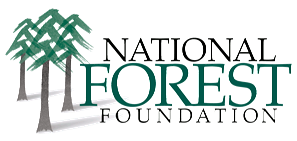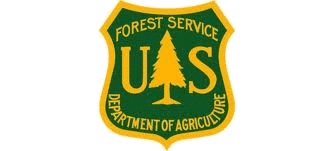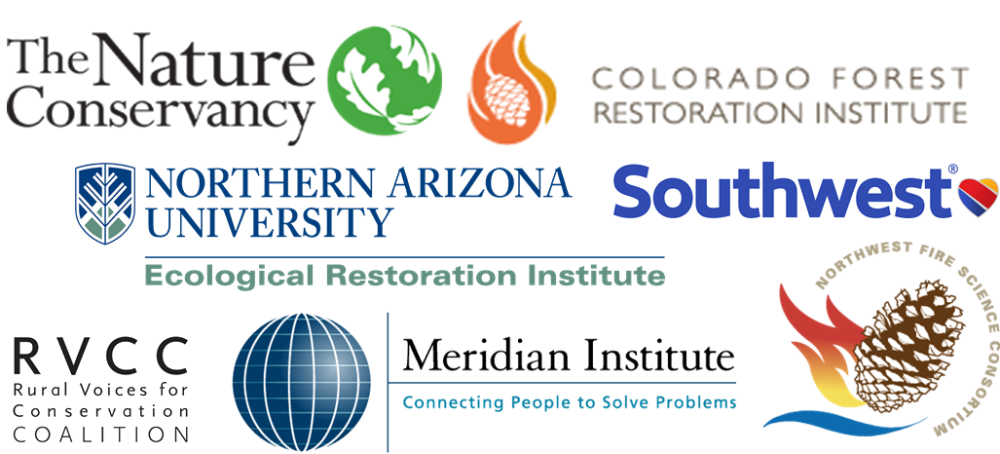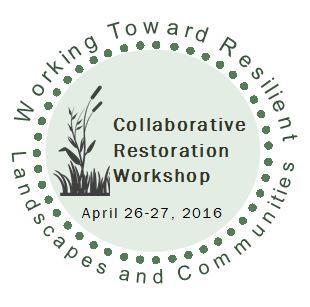All year, we share amazing stories about recreating on and restoring National Forests and Grasslands. Stay in the loop and sign up for Tree-Mail today!
Working Toward Resilient Landscapes and Communities
The 2016 Collaborative Restoration Workshop was a forum for sharing innovative approaches to collaborative restoration, tools, and lessons about planning, implementing, and monitoring restoration efforts on and around National Forest System lands. Through a series of plenary sessions and five breakout tracks, participants engaged deeply in discussing the successes, challenges, and critical questions facing community partners, the U.S. Forest Service, and others working on collaborative efforts. Through the lenses of science, collaboration, planning, and monitoring, participants thought critically about amplifying restoration and working together towards success in the future.
“The CRW was well-organized, and a model of how to manage sessions like this.”
Objective: Describe the constraints and complexities of planning at the landscape scale, and share lessons related to, for example, fire management, urban development, land fragmentation, wildlife management, and invasive species.
Objectives:
Objectives:
Objectives:
Objectives: This session introduced data modeling tools and metrics that have been successful in monitoring large scale forest projects. Remote sensing data continues to improve and modelling tools are becoming increasingly accessible. Large-scale monitoring tools not only assist in identifying management opportunities and priorities, they also add transparency and shared knowledge to collaborative efforts.
Objectives:
Objectives:
Objective:
Objective: Provide an overview of stewardship authority and examples of how it can be used efficiently
Objective: Discuss the following questions: What is adaptive management for federal land managers? How does adaptive management differ from research? How do non-federal partners successfully contribute to adaptive management on federal lands? How adaptive are our federal partners? What are limitations to adaptability when compared to private lands?
Objectives:
Objectives:
Objective: From multiple perspectives, discuss the Front Range Roundtable’s story, including how the group formed, important considerations made by members while launching and nurturing the effort, the decision-making or governance structure, role of the Forest Service, overcoming challenges, and thoughts on the group’s future.
Objective: Highlight examples of implementation across boundaries including examples of using Good Neighbor Authority and the Tribal Forest Protection Act
Objectives:
Objective: Describe innovative, collaborative projects, including: Mill Creek A to Z Stewardship Project on the Colville National Forest, Bottom Canyon on the Idaho Panhandle National Forest, and the North Shore Restoration Project on the Superior National Forest
Objective: Provide case studies of applied ecological science from different biomes to look at efforts to integrate science and restoration action among groups with diverse social, economic, and personal values.
Objective: From multiple perspectives, discuss the West Virginia Restoration Venture’s story, including how the stakeholders came together, important considerations made by members while launching and nurturing the effort, the decision-making structure, role of the Forest Service, overcoming challenges, and thoughts on the group’s future.
Objectives:
Objectives:
Objective: Introduce new, innovative, and emerging tools to prioritize and plan restoration projects, including:
Objective: Discuss how climate information at management scales can aid in restoration decision-making
Objective: Shed light on the challenges of collaboration from the Forest Service and partner perspectives, addressing questions such as: What does the Forest Service have to consider when working with a collaborative group or effort? From the Forest Service perspective, what are key components of a valuable, effective relationship with a collaborative group?
Objective: Provide examples of innovative approaches to funding the implementation of restoration projects
Objectives:
CLICK HERE FOR THE SESSION SUMMARY
Objectives:
Objectives:
NOTES AND SUMMARY: WATER STEWARDSHIP AND CLIMATE CHANGE - MANAGING WATER RESOURCES IN A CHANGING CLIMATE
Expected Outcomes:



“All thanks to NFF and all those who assisted in developing the agenda and concepts for this workshop! It was an awesome week of idea sharing and networking! Definitely time and money well spent and I hope we can continue to capitalize on the momentum going forward.”
